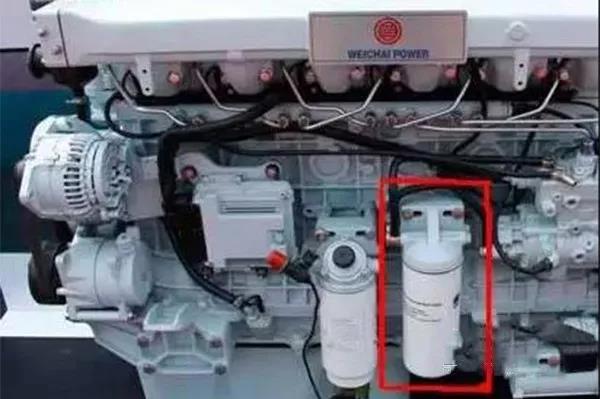Before describing the structure of the oil filter, we first briefly introduce the pollutants in the oil to facilitate a clearer understanding of the role and structural requirements of the oil filter.
Engine oil filter
The typical pollution of engine oil mainly includes the following categories:
1. Organic pollutants (commonly known as “oil sludge”) are mainly derived from unsealed and unburned hydrocarbons, soot, moisture, and dye dilution, accounting for 75% of oil filter pollutants.
2. Inorganic pollutants (dust) mainly come from dirt and abrasion material products, etc., accounting for 25% of the pollutants in the oil filter.
3. Harmful acidic substances mainly originate from by-products, chemical consumption of oil, etc., and account for very few pollutants in the oil filter.
Through the understanding of engine oil pollutants, let us take the right measures to see how these pollutants are filtered structurally
Truck oil filter structure
The oil filter can be divided into replaceable type, spin-on type and centrifugal type according to the structure; according to the arrangement in the system, it can be divided into full-flow type and split-flow type. In general, the engine lubrication system will be equipped with several filters with different filtering capabilities-collector filter, coarse filter and fine filter, which are connected in parallel or in series in the main oil passage of the engine. (The full-flow filter is connected in series with the main oil passage, and the lubricating oil is filtered by the filter when the engine is working; the split-flow filter is connected in parallel with it). Among them, the coarse filter is connected in series in the main oil passage, which is a full flow type; the fine filter is connected in parallel in the main oil passage, which is a split flow type.
The most widely used oil filter structure now includes filter paper, rubber seals, backflow suppression valve, overflow valve, etc.
Engine oil filter structure
Filter paper: It is the key to the oil filter, and the requirements are particularly high, mainly because the temperature of the oil varies from 0 to 300 degrees. Under the sudden temperature change, the concentration of the oil also changes accordingly, which will affect the oil. Filter traffic. The filter paper of a high-quality oil filter should be able to filter impurities under drastic temperature changes while ensuring sufficient flow. Such as nano-scale filter paper produced by Cummins Filtration.
Rubber sealing ring: The sealing ring made of special rubber should be 100% oil-tight.
Backflow suppression valve: Also known as check valve, when the engine is turned off, it can prevent the oil filter from drying out; when the engine is re-ignited, it immediately generates pressure and supplies oil to lubricate the engine.
Overflow valve: Also known as a bypass valve. When the external temperature drops to a certain value or when the oil filter exceeds the normal service period, the overflow valve will open under special pressure to allow unfiltered oil to flow directly into it. engine. Despite this, the impurities in the oil will enter the engine together, but this damage is much smaller than the damage caused by the absence of oil in the engine. Therefore, the relief valve is the key to protect the engine in an emergency.
With the development of technology, the structure of the oil filter has also changed. From the past, the replaceable oil filter has developed into the current mainstream rotary type. The filter paper has also developed from cellulose material to the mainstream composite material. The standard upgrade is also transitioning to nano-scale filter paper with a filtration capacity of 99%. Constantly optimizing and upgrading the structure of the oil filter will better serve the engine and meet the needs of users.
Post time: Jun-16-2020





